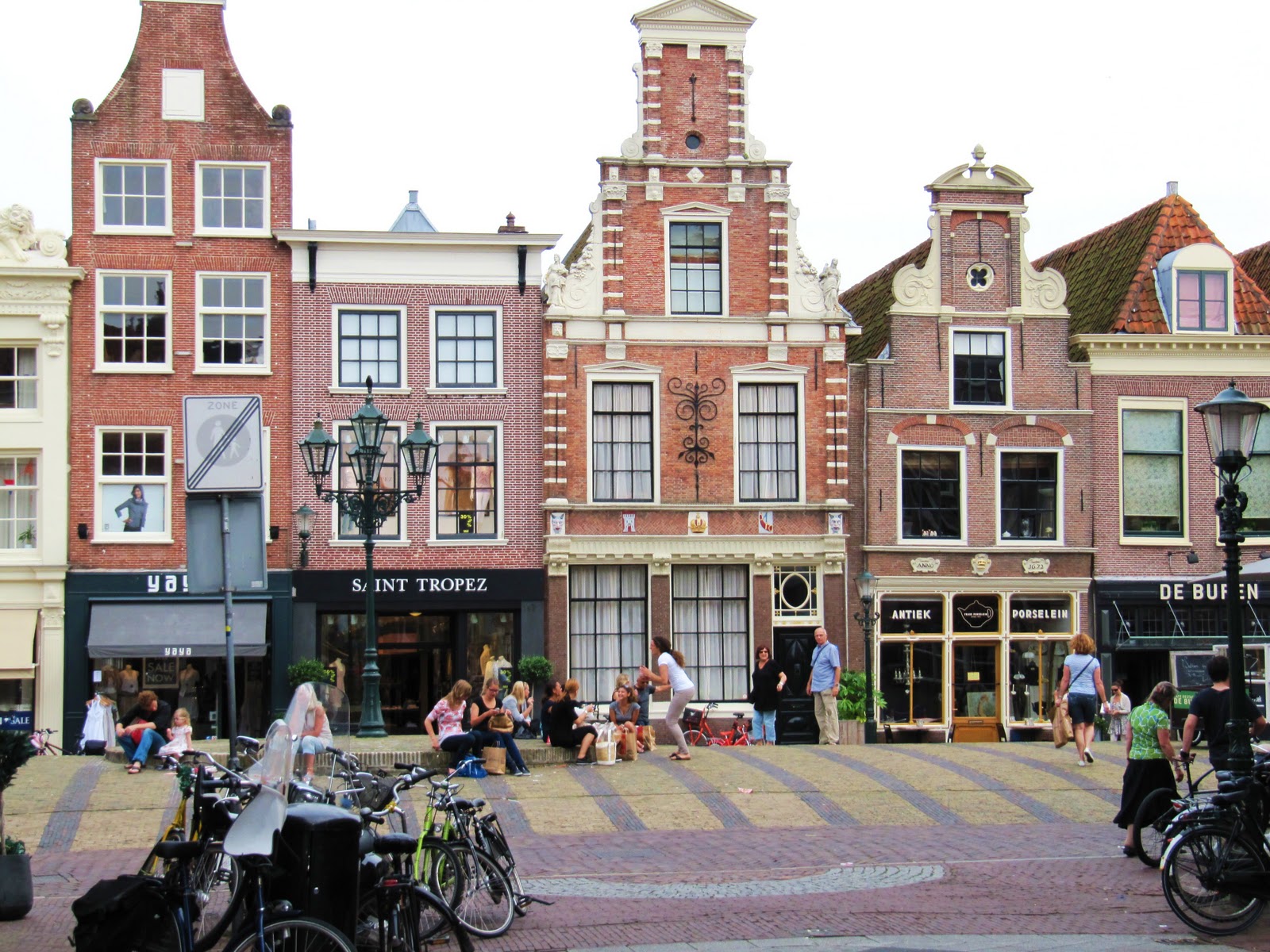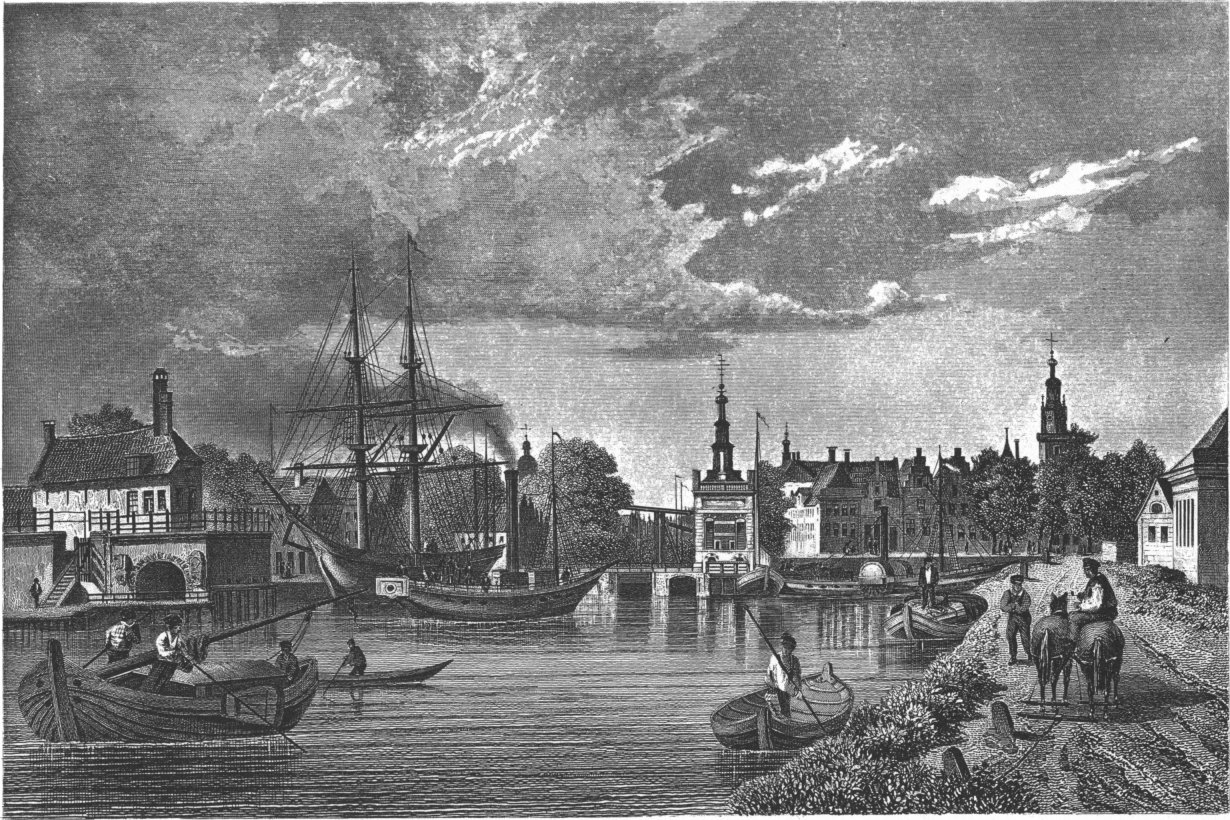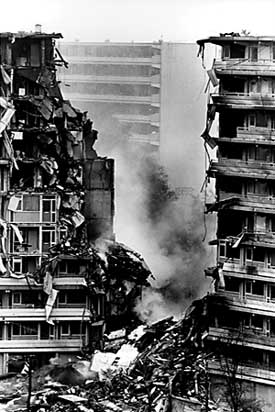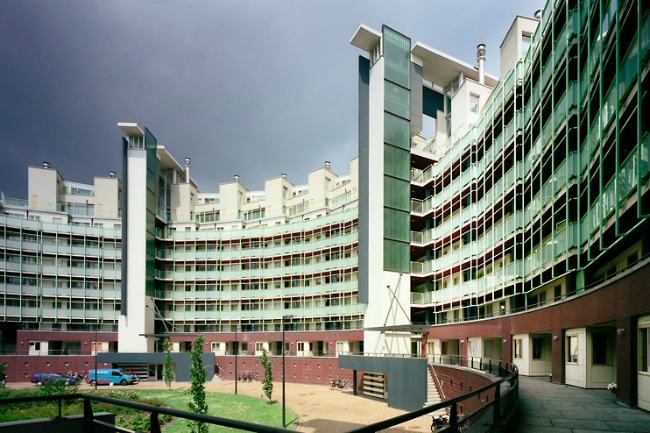|
|
Post by Bonobo on Feb 24, 2013 1:16:03 GMT 1
Very nice images of Wrocław Bo, I like them very much! Are Dutch cities as mixed as Wroc³aw, too? I mean the mixture of architecture styles within a block of streets or even in the same street. In Wroc³aw you can see medieval, pre-war, communist and modern buildings close to each other. What about Rotterdam? Was it faithfully reconstructed after the tragic bombing by Luftwaffe in 1940? |
|
|
|
Post by pjotr on Feb 24, 2013 3:15:53 GMT 1
Very nice images of Wrocław Bo, I like them very much! Are Dutch cities as mixed as Wroc³aw, too? I mean the mixture of architecture styles within a block of streets or even in the same street. In Wroc³aw you can see medieval, pre-war, communist and modern buildings close to each other. What about Rotterdam? Was it faithfully reconstructed after the tragic bombing by Luftwaffe in 1940? Bo, Now you ask a question which is a painful question in my family, but not for me. I mean the Rotterdam family branch of my father, and the various elements, acquaintances. and friends in that Rotterdam family. Like Warsaw Rotterdam was completely demolished. Not the area where my father lived but the complete city centre. Old Rotterdam doesn't exist anymore, and new Rotterdam is a completely new city with new architecture, a new city centre and new neighborhoods. My father is part of the people who long for the "old" pre-war Rotterdam, who has memories of that old Rotterdam of the thirtees (he was born in de december 1927), and for a long time disliked or hated new Rotterdam, which was just rebuilt fast after the war without a large city plan, like for instance Paris. "New" Rotterdam was built in the fourtees, fiftees, sixtees, seventees, eightees, ninetees and partly even today, with the new skyskrapers and "Head of South" as they call it, large works on a new fency Modern district along the river New Meuse. Part of the Rotterdam family actually likes the " New Rotterdam". An old uncle (dead already) said once, a risky joke: " We must thank the Germans that we got rid of the old rubble, now we have New Rotterdam, New York on the Meuse." Old Rotterdam   New Rotterdam New Rotterdam A part of Old Rotterdam (working class neighborhoods) against a background of the New city centre  New Rotterdam New Rotterdam.jpg)   New Rotterdam is a city which is built in the stile of Post war Modernism. Unlike Warsaw, Wrocław, Dresden, Gdansk and Poznañ the city was not restored in the old stile, but was built completely new in the stil of the fiftees and sixtees, but also during the seventees, eightees and ninetees with late 20th century architecture and they are continuing that proces in the 21th century with 21th century architecture, which is built the last 13 years. Rotterdam is one of the few Dutch cities with big city development and a completely Modern, late 20th century (second half 20th century) city centre. Some people find it butt ugly, others love it and find it a fresh city, which is open, wide and modern. (Released of the 17 th, sometimes 16th and 15 th century old elements and late 18th and 19th century chanal houses, chanals, buildings, churches, bridges and old fashionate inner city harbours, like Old Rotterdam had) Cheers, Pieter pl.wikipedia.org/wiki/Nowa_Mozaen.wikipedia.org/wiki/Kop_van_Zuid |
|
|
|
Post by pjotr on Feb 24, 2013 3:37:38 GMT 1
Bo, I think that a few Dutch cities areA as mixed as Wrocław, because in the Netherlands you had the dominance of the Golden age chanal house architecture, like you see in Amsterdam, Leiden (university city), Groningen, Leeuwarden, Haarlem, parts of the Hague, Maastricht, 'S - Hertogenbosch (or Den Bosch), and the smaller cities or towns Gouda (cheese town), Alkmaar, Amersfoort, Delft, Middelburg and Kampen. I mean the mixture of architecture styles within a block of streets or even in the same street. In these cities you see a moderate mix of 16 th and 17 century chanal house architecture (which you partly can see in Flemish cities and towns, Copenhagen and Gdańsk too). In Dutch towns and villages which are really old you sometimes can see a mixture of middle ages Romanesque, Gothic, Northern Renaissance, Golden Age chanal house architecture, some Baroque and Rococo churches and Palaces, 19th century Classicism and and Neo-Gothic churches and next to that rather ugly budget 20 th century working class and middle class area's, and sometimes (if we are lucky) some beautiful Modern buildings next to the old buildings in the city centres like Bauhaus, Le Corbusier, or typical post war rebuilding years constructions. Last decade the buildings and neighbirhoods have a more esthetic aproach, because the Dutch, Western version of East-Block (commmunist) flat- and apartmentbuilding constructions made people depressive. Because the mass unformity created anonymity, alienation, degeneration, vandalism and unsafety as a cause of that. Now they have learned that they can built modern, with retro, neo-classicist elements, and more sustainable and human friendly. The meager Post-war rebuilding (reconstruction) years are over. In general I think the old Polish cities and towns are more rich in their variety of building stiles, ecclecticism and thus pluriformity. They are more hetrogenous than the more monotomous Dutch cities.  The small city if Middelburg The small city if Middelburg This Gdańsk image resembles a Dutch or Flemish city, like Antwerp, Gent, Brugge, Mechelen, Old Rotterdam or Dordrecht. This Gdańsk image resembles a Dutch or Flemish city, like Antwerp, Gent, Brugge, Mechelen, Old Rotterdam or Dordrecht.In Amsterdam you can see medieval, pre-war, Post war (fourtees, fiftees and sixtees) and modern buildings close to each other too, I think. Cheers, Pieter |
|
|
|
Post by pjotr on Feb 24, 2013 11:45:11 GMT 1
|
|
|
|
Post by pjotr on Feb 24, 2013 11:54:25 GMT 1
The North-Holland town of Alkmaar(c:0).jpg)    The Alkmaar Chees market. After Gouda Alkmaar is the second Cheese city (of Northern-Holland chees. Gouda cheese is South-Holland cheese, because Gouda is a South-Holland town) The Alkmaar Chees market. After Gouda Alkmaar is the second Cheese city (of Northern-Holland chees. Gouda cheese is South-Holland cheese, because Gouda is a South-Holland town)  The townhall of Alkmaar The townhall of Alkmaar
|
|
|
|
Post by pjotr on Feb 24, 2013 12:03:05 GMT 1
Gouda Painting of a funfair in Gouda (painting of Johannes Jacobus Bertelman [1821 - 1899]. Bertelman was a Dutch painter and drawing master of the city Gouda) Painting of a funfair in Gouda (painting of Johannes Jacobus Bertelman [1821 - 1899]. Bertelman was a Dutch painter and drawing master of the city Gouda) 
|
|
|
|
Post by tufta on Feb 24, 2013 12:12:56 GMT 1
Wonderful photos and painting, Pieter Keep them coming! Of course as wonderful and informative as the "Polish stuff" provided by Bo. We have some comparison, diversification! Besides your BENELUX is far too charming to keep it unshown   |
|
|
|
Post by pjotr on Feb 24, 2013 12:34:53 GMT 1
MaastrichtMaastricht is our most Southern city and it lays on the border of three countries in an un-Dutch hill like area in Limburg, on the border region of the Netherlands, Belgium and Germany. As a consequence of that Maastricht has the combined charm of a Dutch, German, Flemish and Wallon city and town. It is a different city than other Dutch cities, and people from the North, East and West consider it to be a romantic, cosy, luxurious and bourgondic city. Bourgondic in Dutch means to live well, to enjoy good food ( haute cuisine), special wines and beers, and to take time to live well. They say it has to do that Maastricht lays in the Roman-Catholic region, and Catholics overhere knew and know better how to live well than the more strict and sober Calvinists of the Middle, West, the North and large parts of the East of the country. By the way I have lived for most part of my life in Calvinist regions, and I have to say that that has changed there too. Due to the import of Roman-Catholics of the South who brought flavor to the student cities and opened pubs, restaurants and theatre's in the rest of the country. The students became ofcourse Yuppies, bankers, local politicians, horeca entrepreneurs, shop owners, scientists, professors and last but not least artists: musicians, painters, sculpturists, photographers, moviemakers, journalists, writers and poets. They merged with the Northerners, by marrying Northern-Catholic women or even Calvinist women or secular girls. That mix and the destruction of the pillarisation situation made the Netherlands better and more beautiful. That mix of people and internal import/mirgation created the wonderful mix that opened the North and kept the South. The poor and discriminated South became prosperous and normal, because it developped itself, because there was a Roman-Catholic growth and Renaissance in the 20th century in which the Roman-Catholic faith became the largest faith. And the Roman-Catholic communities and enclaves in the Northern and Western and Eastern parts of the country did well too. The Netherlands became more a united country, because of that. On the other side I have to be honest, that some Roman-Catholic and Protestant tension remains, and that the New faith of Islam is a competition of the christian faiths and the Jewish faith in the Netherlands. The liberal, tolerant and free spirit created the atmopshere for centuries where people could cooperate. I have to be honest that in that relative lihberal society there was a sort of Calvinist (Dutch-Reformed) dominance, and that you had a Sanacja regime kind of enlightened dictatorship of Calvinism. Intolerant towards Roman-Catholicism (who could not open go to church and had covered churches or secret church meetings, and the other Protestant domination were barely recognised either. I remind you of the Remonstrants, the liberal protestant faith of my fathers ancesters. They were persecuted by the Calvinists. ( en.wikipedia.org/wiki/Remonstrants ) The 20th century has shown a great mobility in the Netherlands and people of all parts of the country went to all parts of the country. You have local people, who were born and raised in a region, where for generations their family lived. And you have the import Dutch. I am typical an example of an import Dutch. I am not regionally rooted in the city I live in, nor do I speak the accent or dialect of the city I live in. The Netherlands has a lot of regional and even local differences. That is the large differance with Poland, which is more a monotheist country, with only one kind of Polish which dominates, with only Kashubian and Goral dialects. (and maybe Silesian) That variety has also infuenced Dutch architecture, because all provinces, which are often linked to a region have their own stil of farms. Back to the towns and cities. Due to the fact that a lot of Dutch cities are situated at river banks, near lakes or with chanals, most streets, boulevards, houses, chruches and other buildings are made with the water in mind. How to built it that it will remain in tact for a long time. That's why we heien (Pile driving operations), we drive wooden piles into the ground to create a deep foundation for houses and buildings. ( pl.wikipedia.org/wiki/Palowanie )       The Basilica of Our Lady is a Romanesque church in the historic center of Maastricht, the Netherlands. The church is dedicated to Our Lady of the Assumption and is a Roman catholic parish church in the Diocese of Roermond. The church is often referred to as the Star of the Sea, after the church's main devotion, Our Lady, Star of the Sea. The Basilica of Our Lady is a Romanesque church in the historic center of Maastricht, the Netherlands. The church is dedicated to Our Lady of the Assumption and is a Roman catholic parish church in the Diocese of Roermond. The church is often referred to as the Star of the Sea, after the church's main devotion, Our Lady, Star of the Sea. The interior of the church The interior of the church(c:0).jpg)
|
|
|
|
Post by pjotr on Feb 24, 2013 13:06:17 GMT 1
And now the city of my heart. I lived and studied two years in this city, with it's unique history, cosmopolitanism, Old Dutch qualities, pleasent form of peaceful anarchism in cultural and intellectual sense (A free city of free thinking people). A city who was welcome to many nationalities, and which immgrants gave a lot to the city in the sense of wealth, culture, science and development. I think about the Flemish Calvinist merchants of Antwerp and Gent, who fled the Spanish terror regime in the South, with their Fundamentalist strict Inquisition form of Roman-Catholicsm (that is also the reason why the Spanish catholics often clashed with the French catholics. Also due to geographic and economical reasons) They brought trade, funds, their possession's and their spirit of free enterprise to Amsterdam. Late the French Huegenots, Sephardic jews who fled Portugal and also some Central- and Eastern (adventurous) Ashkenazi jews followed their example. Ofcourse like inn Poland you had a German minority, craftspeople and small traders, burgher, contributed to the Dutch cities and towns. They became Dutch people, but kept their German name (like in Poland the Poles with German names) The inner city of Amsterdam is divided by its network of canals into some 90 “islands,” and the municipality contains approximately 1,300 bridges and viaducts. Amsterdam is the economic centre of the Netherlands, and there tradition persists alongside innovation. Although the city has a modern metro system, about one-fifth of the workforce still relies on the time-honoured bicycle for transportation. The city continues to be famous for its countless Chinese and Indonesian restaurants and the hundreds of houseboats that line its canals. Since the mid-1960s Amsterdam also has been known for a permissive atmosphere, and it attracts many people seeking an alternative lifestyle. Amsterdam is the nominal capital of the Netherlands but not the seat of government, which is The Hague. The royal family, for example, is only occasionally in residence at the Royal Palace, on the square known as the Dam, in Amsterdam. The city lacks the monumental architecture found in other capitals. There are no wide squares suitable for big parades, nor are there triumphal arches or imposing statues. Amsterdam’s intimate character is best reflected in the narrow, bustling streets of the old town, where much of the population still goes about its business. While there are reminders of the glorious past—gabled houses, noble brick facades clad with sandstone, richly decorated cornices, towers and churches, and the music of carillons and barrel organs—the realities of life in the modern city often belie this romantic image.    A sign of Amsterdam city marketing A sign of Amsterdam city marketing  New Amsterdam New Amsterdam Amsterdam movie museum in Amsterdam North Amsterdam movie museum in Amsterdam North  Music centre, Bimhuis Music centre, Bimhuis In the middle of the old city centre region this Modern headquarters of the Central bank of the Netherlands, De Nederlandse Bank is situated In the middle of the old city centre region this Modern headquarters of the Central bank of the Netherlands, De Nederlandse Bank is situated |
|
|
|
Post by pjotr on Feb 24, 2013 13:28:46 GMT 1
|
|
|
|
Post by pjotr on Feb 24, 2013 13:36:25 GMT 1
|
|
|
|
Post by pjotr on Feb 24, 2013 13:41:53 GMT 1
Bijlmer Amsterdam  In 1992 a 747 from El Al had some serious problems and collapsed into a flat block. It happened in a part of Amsterdam called Bijlmer (often called a ghetto which it was at that time. The majority of the People there is of Surinamese, Dutch Antillian or Black African -Ghanese, Senegalese or Nigerian- background) In 1992 a 747 from El Al had some serious problems and collapsed into a flat block. It happened in a part of Amsterdam called Bijlmer (often called a ghetto which it was at that time. The majority of the People there is of Surinamese, Dutch Antillian or Black African -Ghanese, Senegalese or Nigerian- background)
The tragedy is known as the Bijlmerramp [the Bijlmer disaster] or Bijlmer crash.This is the Nova Huta side of Amsterdam. We in the West had our version of the " socialist" new building of the cold war.
|
|
|
|
Post by pjotr on Feb 24, 2013 13:57:27 GMT 1
Other modern buildings and area's in Amsterdam  I went to this Bob Dylan concert with a friend of mine from Arnhem who is a hard core Dylan fan. I went to this Bob Dylan concert with a friend of mine from Arnhem who is a hard core Dylan fan. Ajax soccer club stadium. The stadium is also used for large pop concerts. Madonna concert in the Arena stadium in Amsterdam( I wasn't there, but I saw peaces of the concert on the Dutch tv and newspapers/magazines)    |
|
|
|
Post by pjotr on Feb 24, 2013 14:06:19 GMT 1
|
|
|
|
Post by Bonobo on Feb 26, 2013 20:36:29 GMT 1
|
|
|
|
Post by tufta on Feb 26, 2013 21:49:16 GMT 1
|
|
|
|
Post by pjotr on Feb 26, 2013 22:55:17 GMT 1
Tufta, Both Warsaw and the Hague are expanding cities with a dualism. Both cities have a charming old town and a very fast developing business centre in the centre of the old city not far away from the old town. In the Hague with less space than Warsaw the modern buildings are standing closer to the old ones. These modern buildings are both corporate and government owned. A lot of ministries of the National government in The Hague are settled in New architecture buildings. The most modern cities in the Netherlands today are The Hague, Rotterdam and Eindhoven, which is a city with only new architecture.  Old town with the new skyskrapers behind them Old town with the new skyskrapers behind them The parlaiment buildings with the same skryskrapers in the background The parlaiment buildings with the same skryskrapers in the backgroundCheers, Pieter |
|
|
|
Post by pjotr on Feb 26, 2013 23:00:22 GMT 1
I agree with you, this image could as well have been taken in the area around the Palace of Culture in Warsaw. I think that I prefer Warsaw though, because the Palace of culture is perfectly surrounded by these democratic capitalist Skyskrapers. They merge into harmony.  I love that place of Warsaw, also the Central station area nearby. I know I am a modernist. Can you understand that after having been on top of the Palace of Culture in 2006 (being surrounded by these Polish skryskrapers) I wasn't surprised or impressed by the New York skyskrapers when I entered New York in June 2008. I was prepared.  The Empire State Building experiance was excactly the same as my Warsaw Palace of Culture experiance. Cheers, Pieter P.S.- I love Den Haag (The Hague) though, because I studied there for one year (1991-1992), and got to know very nice people there. The Hague has a sort of quality which is rare in the Netherlands, and you could compare it with the civilization and sophistication of Krakow and the grandeur of Warsaw combined. The Hague is not Amsterdam nor Rotterdam, but has got that "thing" Rotterdam and Amsterdam lacks, a government centre, a diplomatic centre (most foreign embassies are located in the Hague), the Dutch parlaiment, the Dutch government, the Supreme Court, and the Council of State, (but the city is not the capital of the Netherlands which constitutionally is Amsterdam.) Queen Beatrix of the Netherlands lives at Huis ten Bosch and works at Noordeinde Palace in The Hague. 150 international organisations are located in the city, including the International Court of Justice and the International Criminal Court, which makes The Hague one of the major cities hosting the United Nations, along with New York, Vienna, Geneva, and Nairobi. Amsterdam and Rotterdam can mock the Hague as a village, but fact is that that "village" has become on of the most important Dutch cities, with international importance. (That is the sweet revenge of The Hague) Here another link between Warsaw and The Hague, the alliance between Legia Warszawa and Ado Den Haag (the notorious Dutch soccer club, due to it's feared Hooligans). Watch what the Legia supporters in Den Haag sing?: P.S.- I am not a Ado (FC) Den Haag supporter. The only game I went to in my life was in Amsterdam, Ajax-FC Den Haag. Naive as I was back then I ended up in the Hooligan departement of Ajax, the F-side corner of "Super jews" (that's how the F-side call themselves) next to a steaming section with hard core FC Den Haag supporters. It was a high risk game and I had to bow several times to avoid being hit by fire works or projectiles coming from the The Hague side. |
|